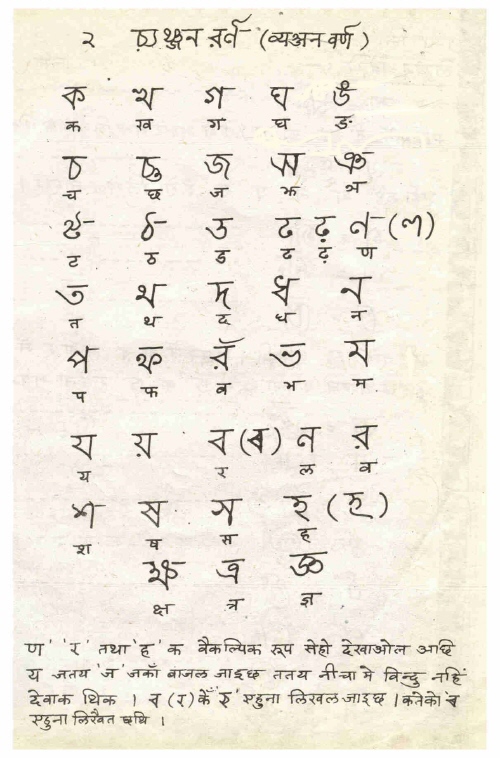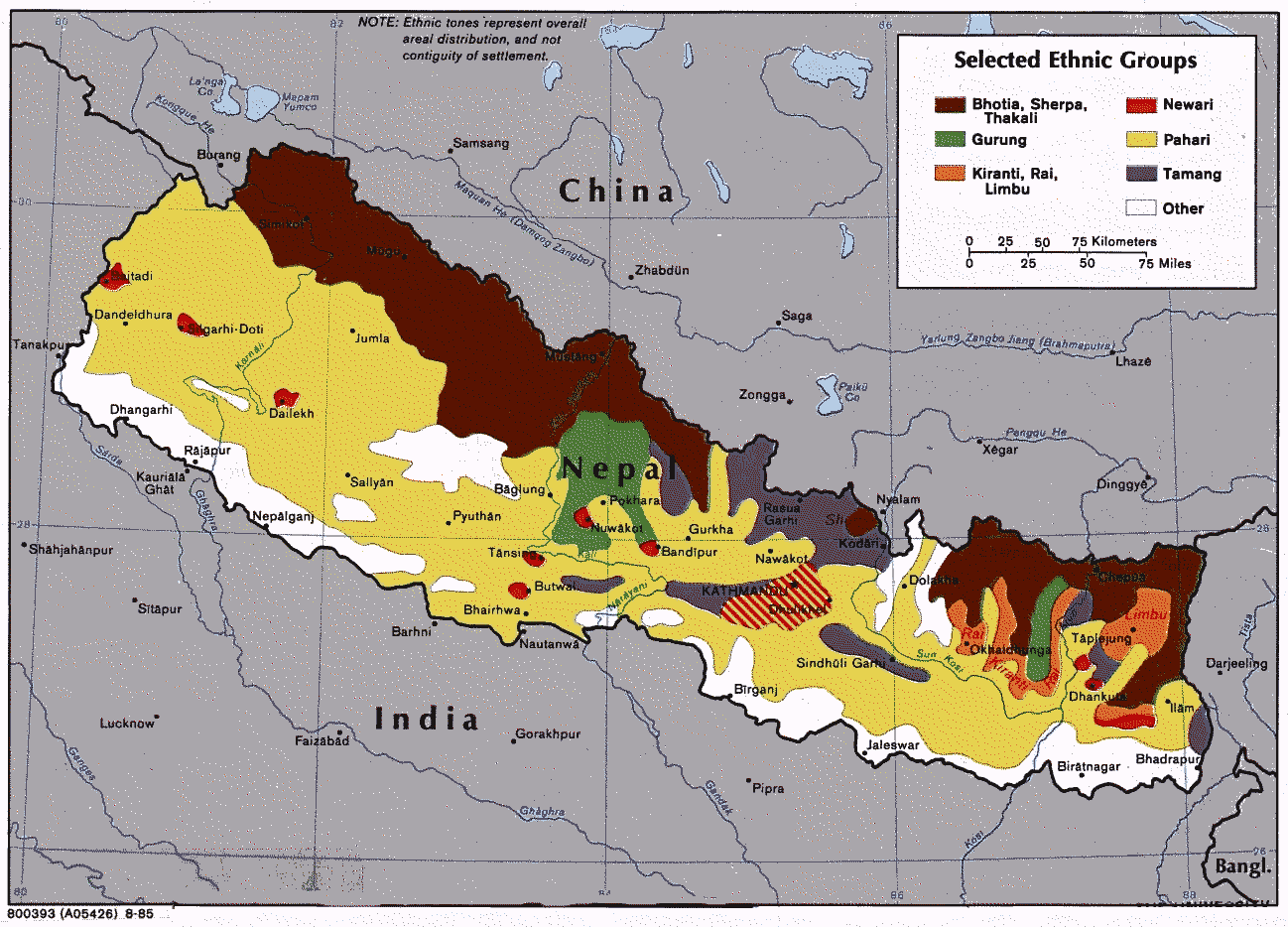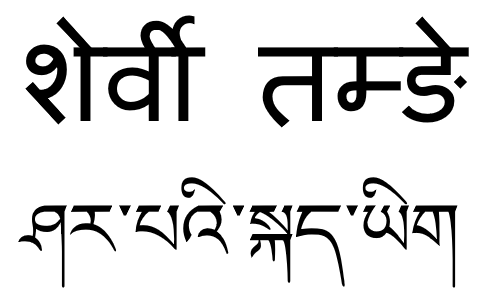|
Himali Rural Municipality
Himali ( ne, हमाली गाउँपालिका ) is the newly formed rural municipality in Bajura District in the Sudurpashchim Province of Nepal. It was formed in March 2017, when Government of Nepal announced 744 local level units in line with the Constitution of Nepal 2015. It lies in the northern region of Bajura District and is also considered to be the remote place of this district. History It is formed by merging previous VDCs named Bichhiya, Rugin and ward no. 1 to 7 of Baddhu VDC. There is snowfall throughout the year in this region. Himali Rural Municipality has an area of and the population of this municipality is 9,214. It is the second smallest rural municipality of Bajura district in terms of population. It is divided into 7 wards and the headquarter of this newly formed municipality is situated at Dhulachaur. Demographics At the time of the 2011 Nepal census, Himali Rural Municipality had a population of 9,229. Of these, 95.9% spoke Nepali, ... [...More Info...] [...Related Items...] OR: [Wikipedia] [Google] [Baidu] |
Provinces Of Nepal
The provinces of Nepal ( ne, नेपालका प्रदेशहरू, translit=Nepālkā Pradeśharū) were formed on 20 September 2015 in accordance with Schedule 4 of the Constitution of Nepal. The seven provinces were formed by grouping the existing List of districts in Nepal, districts. The current system of seven provinces replaced an earlier system where Nepal was divided into 14 List of zones of Nepal, administrative zones which were grouped into five Development regions of Nepal, development regions. History A committee was formed to restructure administrative divisions of Nepal on 23 December 1956 and in two weeks, a report was submitted to the government. In accordance with The ''Report On Reconstruction Of Districts Of Nepal, 2013'' (), the country was first divided into total 7 ''Kshetras'' (area). # (Unnamed) # Madesh Kshetra # Bagmati Kshetra # Gandaki Kshetra # Lumbini Kshetra # Karnali Kshetra # Mahakali Kshetra In 1962, all ''Kshetras'' were dissolv ... [...More Info...] [...Related Items...] OR: [Wikipedia] [Google] [Baidu] |
Bichhiya
Bichhiya is a village in Bajura District in the Seti Zone of north-western Nepal. At the time of the 1991 Nepal census The 1991 Nepal census was a widespread national census conducted by the Nepal Central Bureau of Statistics. Working with Nepal's Village Development Committees at a district level, they recorded data from all the main towns and villages of each ... it had a population of 1,904 and had 352 houses in the village. References Populated places in Bajura District {{Bajura-geo-stub ... [...More Info...] [...Related Items...] OR: [Wikipedia] [Google] [Baidu] |
Lohar
Lohar is a social group in India, Nepal and Pakistan. They are associated with iron smelting work. They form part of a loose grouping of traditionally artisanal castes known as Panchals. Lohars worship Lord Vishwakarma and other Hindu gods and claim to be Vishwakarma's descendants. Lohar caste is included in OBC in different parts of India. Regional synonyms include Vishwakarma and Saifi/Tarkhan (for Muslims). Names Lohar are known by varied surnames in different regions. * Assam: Lohar, Karmakar, Vishwakarma * Andhra Pradesh: VishwaBrahmins,Lohar, Achari, Chary, and Acharya * Bengal: Lohar, Karmakar, Raut, Majhi, Dandamajhi, Dalui, Sutar * Bihar and Uttar Pradesh: Lohar‚ Sharma, Vishwakarma and Thakur * Jammu and Punjab : Lohar, Verma, Tarkhan, Mistri * Delhi: Lohar, Panchal * Haryana: Lohar, Dhalwal, Tanwar, Panwar, Solanki, Chauhan, Dangi, Karhera, Dharra, Bhavra, Siwal, Panchal, Bhardwaj, pitlehra *Jharkhand: Lohar, Lohra, Lohara * karnataka : Lohar, kammara, Achari ... [...More Info...] [...Related Items...] OR: [Wikipedia] [Google] [Baidu] |
Thakuri
Thakuri ( ne, ठकुरी) is a sub-caste of Khasas tribes in Nepal. It consists of the historical ruling class, and is made up of the descendants of the Great Khasa Malla kingdom rulers of the Baisi and Chaubisi principalities. The former royal family of Nepal also belong to this Khas sub-tribe. Etymology Nepali sociologist Harka Bahadur Gurung noted that the ''Thakuri'' is the Nepalese version of the Hindi word '' Thakur'' which means 'master of the estate'. Thakuris of Nepal are also associated with some territory inherited from the days of Baisi and Chaubisi principalities and the term ''Thakurai'' actually refers to 'fiefdom'. Origins Thakuris traditionally constituted the ruling and warrior classes, and claimed the Kshatriya varna. Thakuris are a high socio-political group considered to have arisen from intermarriage between Khas, Magars, and perhaps Indian Rajput immigrants. The 1854 Muluki Ain (Legal Code) refers Thakuris by the term ''Rajputs'' despite being des ... [...More Info...] [...Related Items...] OR: [Wikipedia] [Google] [Baidu] |
Sarki (ethnic Group)
Sarki/Mijar ( ne, सार्की, Tibetan: སར་ཀི།) is a Khas occupational caste traditionally belonging to leather workers. They are found in the region of the Himalayas, Nepal, across the hills of Darjeeling & Kalimpong and in Terai area of Dooars. They are experts in playing their musical instrument "Madal" and performing dance in a group which is also called “Khayali Marooni”. According to the 2011 Nepal census, Sarki makes up 1.4% of Nepal's population (374,816 people). Sarki are referred to in the Nepali and Thakali languages. Due to many caste-based discriminations in Nepal, the government of Nepal legally abolished the caste-system and criminalized any caste-based discrimination, including "untouchability" (the ostracism of a specific caste) - in the year 1963 A.D. With Nepal's step towards freedom and equality, Nepal, previously ruled by a Hindu monarchy, was a Hindu nation which has now become a secular state, and on 28 May 2008, it was declared a ... [...More Info...] [...Related Items...] OR: [Wikipedia] [Google] [Baidu] |
Bahun
Bahun ( ne, बाहुन) or Khas Brahmin ( ne, खस ब्राह्मण) is a caste ( ''Varna'') among Khas people of Nepal. Their origins are from the Indo-Aryan Khasa tribe of Nepal and South Asia. According to the 2011 Nepal census, Bahun is the second most populous group after Chhetri, another Varna within the hill Hindus in Nepal. According to 1854 ''Muluki Ain'' (Nepalese Legal Code), Bahuns were regarded as caste among sacred thread bearers (Tagadhari) and twice-born Hindus. Origin Traditionally, Bahuns were members of the Khas community together with Chhetris and Hill Dalits. Possibly due to political power of the Khasa Malla kingdom, Khas Bahun and Khas Rajput (Chhetris) had high social status like plain Brahmins and Rajputs in the present-day western Nepal. Bahuns, regarded as upper class Khas group together with Chhetri, were associated mostly with the Gorkha Kingdom. Bahuns were original inhabitants of Karnali region of Nepal. The immigration ... [...More Info...] [...Related Items...] OR: [Wikipedia] [Google] [Baidu] |
Chhetri
Chhetri (Kshetri, Kshettri, Kshetry or Chhettri), ( ne, क्षेत्री ; IAST: ''Kṣetrī'') historically called Kshettriya or Kshetriya or Khas are Nepali speakers of Khas community, some of whom trace their origin to migration from medieval India. Chhetri was a caste of administrators, governor and military elites in the medieval Khas Kingdom and Gorkha Kingdom (later unified Kingdom of Nepal). The nobility of the Gorkha Kingdom mainly originated from Chhetri families. They also had a strong presence in civil administration affairs. The bulk of prime ministers of Nepal before the democratization of Nepal belonged to this caste as a result of the old Gorkhali aristocracy. Gorkha-based aristocratic Chhetri families included the Pande dynasty, the Basnyat dynasty, the Kunwar family, and the Thapa dynasty, (Rana dynasty and other Kunwars). Khas Chhetris were traditionally considered a division of the Khas people with Khas Brahmin (commonly called Khas Bahun). They m ... [...More Info...] [...Related Items...] OR: [Wikipedia] [Google] [Baidu] |
Maithili Language
Maithili () is an Indo-Aryan language spoken in parts of Languages of India, India and Languages of Nepal, Nepal. It is native to the Mithila region, which encompasses parts of the Indian states of Bihar and Jharkhand as well as Nepal's eastern Terai. It is one of the 22 Eighth Schedule to the Constitution of India, officially recognised languages of India and the second most spoken Languages of Nepal, Nepalese language in Nepal. The language is predominantly written in Devanagari, but there were two other historically important scripts: Tirhuta script, Tirhuta, which has retained some use until the present, and Kaithi script, Kaithi. Official status In 2003, Maithili was included in the 8th Schedule, Eighth Schedule of the Indian Constitution as a recognised language of India, Indian language, which allows it to be used in education, government, and other official contexts in India. Maithili language is included as an optional paper in the Union Public Service Commission, UP ... [...More Info...] [...Related Items...] OR: [Wikipedia] [Google] [Baidu] |
Tamang Language
Tamang (Devanagari: तामाङ; ''tāmāng'') is a term used to collectively refer to a dialect cluster spoken mainly in Nepal, Sikkim, West Bengal (Darjeeling) and North-Eastern India. It comprises Eastern Tamang, Northwestern Tamang, Southwestern Tamang, Eastern Gorkha Tamang, and Western Tamang. Lexical similarity between Eastern Tamang (which is regarded as the most prominent) and other Tamang languages varies between 81% to 63%. For comparison, lexical similarity between Spanish and Portuguese, is estimated at 89%. Ethnologue report for Spanish Dialects ''Ethnologue'' divides Tamang into the following varieties due to mutual unintelligibility. *Eastern Tamang: 759,000 in Nepal (2000 WCD). Population total all countries: 773,000. Sub-dialects are as follows. **Outer-Eastern Tamang (Sailung Tamang) **Central-Eastern Tamang (Temal Tamang) **Southwestern Tamang (Kath-Bhotiya, Lama Bhote, Murmi, Rongba, Sain, Tamang Gyoi, Tamang Gyot, Tamang Lengmo, Tamang Tam) *Western T ... [...More Info...] [...Related Items...] OR: [Wikipedia] [Google] [Baidu] |
Sherpa Language
Sherpa (also Sharpa, Xiaerba, or Sherwa) is a Tibetic language spoken in Nepal and the Indian state of Sikkim, mainly by the Sherpa. The majority speakers of the Sherpa language live in the Khumbu region of Nepal, spanning from the Chinese (Tibetan) border in the east to the Bhotekosi River in the west. About 200,000 speakers live in Nepal (2001 census), some 20,000 in Sikkim (1997) and some 800 in Tibetan Autonomous Region (1994). Sherpa is a subject-object-verb (SOV) language. Sherpa is predominantly a spoken language, although it is occasionally written using either the Devanagari or Tibetan script. Phonology Sherpa is a tonal language. Sherpa has the following consonants: Consonants * Stop sounds can be unreleased in word-final position. * Palatal sounds can neutralize to velar sounds when preceding . * can become a retroflex nasal when preceding a retroflex stop. * can have an allophone of when occurring in fast speech. Vowels * Vowel sounds have the ... [...More Info...] [...Related Items...] OR: [Wikipedia] [Google] [Baidu] |
Nepali Language
Nepali (; , ) is an Indo-Aryan language native to the Himalayas region of South Asia. It is the official, and most widely spoken, language of Nepal, where it also serves as a '' lingua franca''. Nepali has official status in the Indian state of Sikkim and in the Gorkhaland Territorial Administration of West Bengal. It is spoken by about a quarter of Bhutan's population. Nepali also has a significant number of speakers in the states of Arunachal Pradesh, Assam, Himachal Pradesh, Manipur, Meghalaya, Mizoram and Uttarakhand. In Myanmar it is spoken by the Burmese Gurkhas. The Nepali diaspora in the Middle East, Brunei, Australia and worldwide also use the language. Nepali is spoken by approximately 16 million native speakers and another 9 million as a second language. Nepali is commonly classified within the Eastern Pahari group of the Northern zone of Indo-Aryan. The language originated from the Sinja Valley, Karnali Province then the capital city of the Khasa K ... [...More Info...] [...Related Items...] OR: [Wikipedia] [Google] [Baidu] |
2011 Nepal Census
Nepal conducted a widespread national census in 2011 by the Nepal Central Bureau of Statistics. Working with the 58 municipalities and the 3915 Village Development Committees at a district level, they recorded data from all the municipalities and villages of each district. The data included statistics on population size, households, sex and age distribution, place of birth, residence characteristics, literacy, marital status, religion, language spoken, caste/ethnic group, economically active population, education, number of children, employment status, and occupation. *Total population in 2011: 26,494,504 *Increase since last census 2001: 3,343,081 *Annual population growth rate (exponental growth): 1.35 *Number of households ... [...More Info...] [...Related Items...] OR: [Wikipedia] [Google] [Baidu] |




